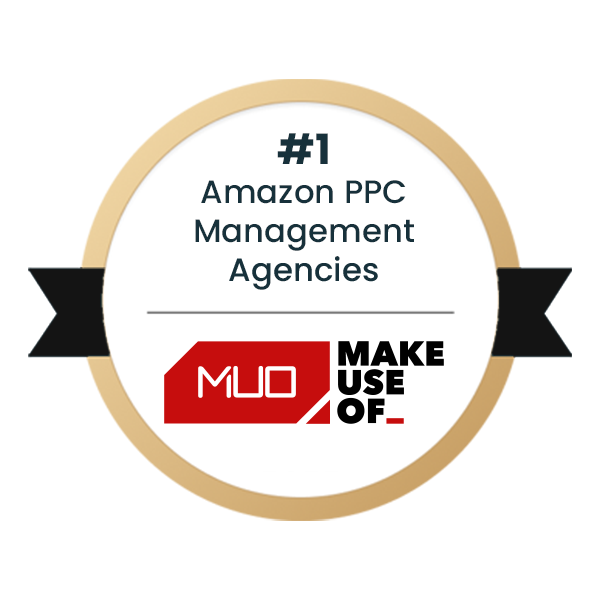Amazon Pay-Per-Click advertising has become the backbone of successful e-commerce strategies, but without proper negative keyword management, your campaigns can quickly drain budgets on irrelevant clicks. Negative keywords are your first line of defense against wasted ad spend, yet they remain one of the most underutilized tools in Amazon PPC management. This comprehensive guide will transform your understanding of negative keywords and provide actionable strategies to maximize your advertising ROI.
Understanding Negative Keywords: The Foundation of Efficient PPC
Negative keywords are terms that prevent your ads from showing when shoppers search for specific phrases. Unlike traditional keywords that trigger your ads, negative keywords act as filters, ensuring your products appear only for relevant searches. This filtering mechanism is crucial because Amazon’s algorithm naturally wants to show your ads to as many people as possible, regardless of purchase intent.
The power of negative keywords lies in their ability to refine your traffic quality. When you add “free” as a negative keyword to a premium product campaign, you immediately eliminate bargain hunters who aren’t your target customers. This refinement doesn’t just save money; it improves your campaign’s overall performance metrics, leading to better ad placements and lower costs over time.
Amazon offers three match types for negative keywords: exact, phrase, and broad. Each serves different purposes and requires strategic implementation. Exact match negative keywords block only the specific term, phrase match blocks searches containing the exact phrase in order, and broad match blocks searches containing any of the negative keyword terms in any order.
The Hidden Costs of Poor Negative Keyword Management
Poor negative keyword strategy creates a cascade of problems that extend far beyond wasted ad spend. When your ads appear for irrelevant searches, you experience low click-through rates, which signals to Amazon that your ads aren’t resonating with customers. This poor performance data causes Amazon’s algorithm to reduce your ad visibility and increase your costs for relevant searches.
Consider a seller of premium leather wallets whose ads appear for searches like “cheap wallet,” “free wallet,” or “wallet under $10.” Not only do these clicks waste money, but they also damage the campaign’s performance metrics. The resulting low conversion rates teach Amazon’s algorithm that this product isn’t desirable, creating a negative feedback loop that becomes increasingly expensive to overcome.
The financial impact compounds over time. A campaign spending $1000 monthly with 30% irrelevant traffic wastes $300 directly. However, the poor performance metrics from that irrelevant traffic can increase costs on relevant searches by 20-40%, effectively doubling the true cost of poor negative keyword management.
Building Your Negative Keyword Foundation: Research and Discovery
Effective negative keyword strategy begins before launching campaigns. Start by analyzing your product’s unique selling propositions and identifying what it’s NOT. If you’re selling premium products, immediately add terms like “cheap,” “free,” “budget,” and “discount” to your negative keyword list. This proactive approach prevents wasted spend from day one.
Amazon’s search term reports provide goldmine data for negative keyword discovery. Download these reports weekly and analyze every search term that generated clicks but no conversions. Look for patterns: Are people searching for different colors, sizes, or product types? These insights inform both negative keyword additions and campaign optimization opportunities.
Competitor research reveals additional negative keyword opportunities. Use tools like Helium 10 or Jungle Scout to identify terms your competitors target that aren’t relevant to your products. If competitors sell both men’s and women’s versions of a product but you only sell men’s, “women’s” becomes a crucial negative keyword for your campaigns.
Brand protection requires specific attention in negative keyword strategy. If you don’t carry certain brands, add competitor brand names as negative keywords. This prevents your ads from appearing when customers specifically search for brands you don’t sell, improving traffic quality and avoiding potential trademark issues.
Strategic Implementation: Campaign-Level vs. Ad Group-Level Negative Keywords
Campaign-level negative keywords apply to all ad groups within a campaign, making them ideal for broad exclusions that apply to your entire product line. Add terms like “free,” “wholesale,” “bulk,” and competitor brand names at the campaign level. This approach ensures consistent filtering across all ad groups while simplifying management.
Ad group-level negative keywords allow for more granular control, enabling you to tailor exclusions to specific product variations. If one ad group targets “running shoes” and another targets “dress shoes,” you can add “dress” as a negative keyword to the running shoe ad group and “running” to the dress shoe ad group, preventing internal competition.
The timing of negative keyword implementation affects campaign performance significantly. Adding too many negative keywords too quickly can severely restrict traffic before you understand search patterns. Start with obvious exclusions and gradually add more specific negative keywords as data accumulates. This measured approach allows campaigns to find their natural audience while progressively improving efficiency.
Cross-campaign negative keyword coordination prevents internal competition between your own campaigns. If you have separate campaigns for different product lines, ensure each campaign includes negative keywords for the others’ target terms. This strategy improves Quality Score by reducing competition between your own ads and allows each campaign to optimize for its specific audience.
Advanced Negative Keyword Strategies for Maximum Impact
Seasonal negative keywords require strategic timing and management. Black Friday and holiday campaigns might benefit from adding “January,” “February,” and other non-seasonal months as negative keywords during promotional periods. Conversely, regular campaigns might add “Black Friday” and “Christmas” as negative keywords to avoid competing with seasonal campaigns.
Geographic negative keywords become relevant when your products have regional limitations or preferences. If you’re selling winter gear, adding warm-climate state abbreviations as negative keywords during summer months can improve efficiency. Similarly, if your products aren’t suitable for certain regions due to regulations or cultural preferences, geographic exclusions make sense.
Intent-based negative keywords focus on eliminating searchers with non-commercial intent. Terms like “review,” “comparison,” “vs,” “how to,” and “tutorial” often indicate research rather than purchase intent. However, be cautious with this approach, as some informational searches do convert, particularly for complex or expensive products.
Negative keyword automation tools can streamline management for large campaigns, but they require careful configuration. Set up automated rules to add high-spend, zero-conversion terms as negative keywords after they reach predetermined thresholds. However, always review automated additions manually to ensure they don’t exclude potentially valuable traffic.
Monitoring and Optimization: Making Data-Driven Decisions
Weekly negative keyword audits should become standard practice for serious Amazon advertisers. Download search term reports and sort by spend to identify high-cost, low-performing terms first. This prioritization ensures you address the most expensive problems quickly, maximizing immediate impact on campaign efficiency.
Conversion rate analysis reveals negative keyword opportunities that pure spend analysis might miss. Terms with decent click-through rates but poor conversion rates indicate traffic quality issues. These terms often benefit from negative keyword additions, even if they don’t represent the highest absolute spend.
Seasonal pattern recognition helps optimize negative keyword timing. Track performance of borderline terms across different seasons and promotional periods. Terms that perform poorly during regular periods might convert well during sales events, suggesting temporary rather than permanent negative keyword additions.
Long-tail negative keyword opportunities often hide in plain sight within search term reports. Look for common word combinations that consistently underperform. If searches containing “for kids” consistently fail to convert for adult products, adding this as a phrase match negative keyword can significantly improve efficiency.
Common Pitfalls and How to Avoid Them
Over-aggressive negative keyword addition represents the most common mistake in campaign management. Sellers often add negative keywords too broadly, inadvertently blocking potentially profitable traffic. Always use the most restrictive match type possible when adding negative keywords. If “cheap leather wallet” doesn’t convert, add it as exact match rather than adding “cheap” as broad match.
Failing to account for search evolution costs sellers profitable traffic over time. Consumer search patterns change, and yesterday’s negative keyword might block tomorrow’s profitable traffic. Quarterly reviews of negative keyword performance help identify terms that might deserve second chances, particularly as your product reviews and market position evolve.
Cross-campaign negative keyword conflicts create missed opportunities when different campaigns compete for the same valuable traffic. Map out all your campaigns’ target keywords and ensure negative keywords don’t accidentally block relevant traffic for other campaigns. This coordination becomes increasingly important as your campaign portfolio grows.
Ignoring mobile-specific search patterns leads to suboptimal negative keyword strategies. Mobile searchers often use different terminology and have different intent patterns than desktop users. Analyze search term reports by device type to identify mobile-specific negative keyword opportunities.
Measuring Success: KPIs and Performance Metrics
ACoS improvement directly reflects negative keyword strategy success. Track ACoS trends following negative keyword implementations to quantify impact. Successful negative keyword strategies typically reduce ACoS by 15-30% within 2-4 weeks of implementation, though results vary by product category and competition level.
Click-through rate improvements indicate better traffic quality resulting from negative keyword optimization. As irrelevant searches get filtered out, remaining traffic should demonstrate higher engagement rates. Look for CTR improvements of 10-20% following comprehensive negative keyword optimization.
Conversion rate increases provide the clearest indicator of traffic quality improvement. When negative keywords successfully filter out unqualified traffic, remaining visitors should convert at higher rates. Monitor conversion rate trends closely, as improvements here directly translate to better campaign performance and lower costs.
Search impression share changes can help gauge whether negative keyword strategies are too aggressive. Significant drops in impression share might indicate over-optimization, while maintained or improved impression share suggests effective traffic refinement without losing valuable opportunities.
Advanced Tools and Automation Strategies
Third-party tools like Perpetua, Sellics, and PPC Entourage offer sophisticated negative keyword automation capabilities. These tools can automatically identify and add negative keywords based on predetermined rules, saving time and ensuring consistent optimization. However, they require careful setup and monitoring to avoid over-optimization.
Amazon’s Portfolio Manager enables bulk negative keyword management across multiple campaigns, streamlining optimization for sellers with extensive campaign portfolios. Use this tool to apply broad negative keywords across entire portfolios quickly, then refine with campaign-specific additions.
API-based solutions allow for real-time negative keyword optimization for enterprise sellers. These solutions can monitor search term performance continuously and add negative keywords automatically based on performance thresholds, enabling truly hands-off optimization for large-scale operations.
Custom dashboard creation helps visualize negative keyword impact and identify optimization opportunities. Track key metrics like negative keyword additions, performance improvements, and cost savings to quantify strategy success and identify areas for continued optimization.
Future-Proofing Your Negative Keyword Strategy
Machine learning integration in Amazon’s advertising platform means negative keyword strategies must evolve continuously. Amazon’s algorithms become increasingly sophisticated at matching ads to relevant searches, but they still require human guidance through negative keywords to align with specific business objectives.
Voice search growth influences negative keyword requirements as conversational queries become more common. These longer, more natural search phrases require different negative keyword approaches, focusing on intent rather than specific keyword combinations.
Market expansion requires negative keyword strategy evolution as you enter new product categories or target new customer segments. Regularly audit your negative keyword lists to ensure they still align with your current product portfolio and target market.
Competition changes affect negative keyword relevance over time. As competitors enter and exit your market, previously relevant negative keywords might become obsolete, while new exclusions become necessary. Quarterly competitive analysis should inform negative keyword strategy updates.
Conclusion: Mastering Negative Keywords for Long-term Success
Negative keyword mastery separates successful Amazon advertisers from those struggling with high costs and poor performance. This strategic approach requires consistent effort and continuous optimization, but the results justify the investment. Sellers implementing comprehensive negative keyword strategies typically see 20-40% improvements in campaign efficiency within 60 days.
The key to success lies in treating negative keywords as a proactive strategy rather than a reactive fix. Build negative keyword research into your campaign planning process, implement systematic monitoring procedures, and maintain a long-term optimization mindset. Remember that negative keyword strategy is never complete; it requires ongoing refinement as markets evolve and search patterns change.
Your negative keyword strategy should reflect your business objectives, target customer profile, and competitive positioning. By following the strategies outlined in this guide and maintaining consistent optimization practices, you’ll build campaigns that attract high-quality traffic while minimizing wasted spend, ultimately driving sustainable growth and profitability on Amazon’s competitive marketplace.







